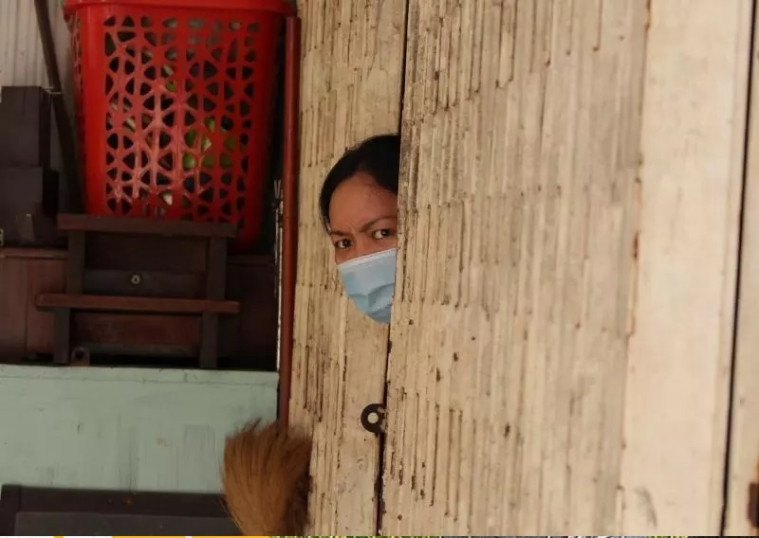
Quickly placing her sleeping child on the bed, Mrs. Le Minh Thuy Vy, 23, in Tan Binh district in Ho Chi Minh City rushed to clean up the room covered with milk cartons and toys. She then rushed to the kitchen to prepare lunch for her 80-year-old mother-in-law.
After lunch, while the child was sleeping, she did the laundry, took care of her husband's pets, and prepared dinner for the family. After closing her hair salon at her husband's request, Vy became wife, mother, and maid for a family of four.
As the office manager of a law office, Vy's husband did not want his wife to do a job where she can be "easily seduced and fallen". He believed that men are the breadwinners of the family. Letting his wife struggle and earn money in the society can affect his image in the eyes of friends and colleagues.
Dr. Khuat Thu Hong, Director of the Institute for Social Development Studies (ISDS), said this thinking is extremely toxic and affects the country’s gender equality.
She said that Vietnam has had certain successes in moving towards gender equality. However, in recent years, gender equality has showed signs of slowing down.
According to the World Economic Forum’s rankings, Vietnam's gender equality ranking has been falling since 2006, from 65th to 77th in 2018 and 87th in 2021.
The decline in Vietnam's gender equality ranking is also evident in the report "Overview of Gender Equality in Viet Nam in 2021" from the United Nations Agency for Gender Equality and Women's Empowerment (UN Women).
This report states: “Vietnam's ranking according to the World Economic Forum's Global Gender Gap Index has fluctuated. Overall, the country has dropped 22 places in the past five years.” This shows that the country still has a long way to achieve equality and women still suffer many disadvantages.
Not taking advantage of half of workforce

According to experts, one of the most noticeable things about gender equality in Vietnam is the lack of equality between women and men in the workforce. The rate of women participating in the labor force is particularly high. However, their contributions to society are not compatible with the quality of work they have.
Dr. Khuat Thu Hong said that women make up half of the national workforce (48%). More than 70% of Vietnamese women of working age work and generate income. However, women's jobs are less stable, less protected, and pay less than men's. Women also hold fewer decision-making jobs (less than 25%), both in government and in business.
The UN Women’s report recognizes that there are still gender gaps in Vietnam. Among them, persistent gaps include a wider sex ratio at birth due to preference for sons.
Problems include: patterns/prejudices on choosing gender-appropriate majors and a narrow range of occupations; vulnerable, unprotected and underpaid employment; prejudice against women in leadership roles, especially against women holding executive positions or at the village head level; and high rate of violence perpetrated by husband/partner.
Dr. Khuat Thu Hong said: “Currently, Vietnamese society still has the notion that men are the breadwinners of the family. This is a misconception that is harmful to the social and economic development of the country. If only men are the breadwinners and workers, the family and the country cannot develop.”
“We need to change this misconception to encourage, create more conditions and opportunities for women, so that this labour force can further develop its capacity. If women promote their capacity, the country can make good use of and promote half of its labor force," added Dr. Khuat Thu Hong.
Ha Nguyen